Christina Hogman, I Quattro Temperamenti - Handel: Vocal and Instrumental Chamber Music (1989)
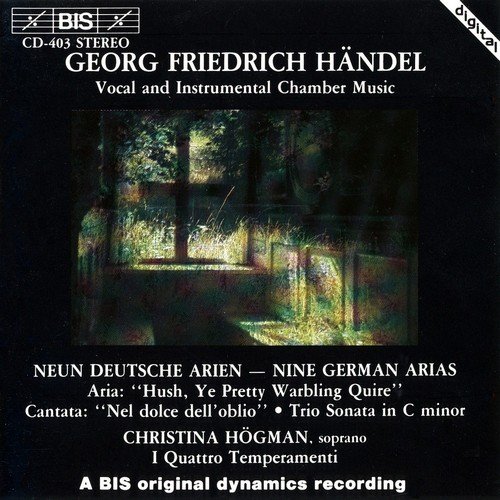
Artist: Christina Hogman, I Quattro Temperamenti
Title: Handel: Vocal and Instrumental Chamber Music
Year Of Release: 1989
Label: BiS
Genre: Classical
Quality: FLAC (image+.cue,log,scans)
Total Time: 01:09:26
Total Size: 402 Mb
WebSite: Album Preview
Tracklist: Title: Handel: Vocal and Instrumental Chamber Music
Year Of Release: 1989
Label: BiS
Genre: Classical
Quality: FLAC (image+.cue,log,scans)
Total Time: 01:09:26
Total Size: 402 Mb
WebSite: Album Preview
Neun Deutsche Arien (44:38)
1 Künft' Ger Zeiten Eitler Kummer, Hwv202 5:21
2 Das Zitternde Glänzen Der Spielenden Wasser, Hwv202 4:33
3 Süsser Blumen Ambraflocken, Hwv204 6:45
4 Süsser Stille, Sanfte Quelle, Hwv205 5:00
5 Singe Seele, Gott Zum Preise, Hwv206 4:21
6 Meine Seele Hört Im Sehen, Hwv207 4:48
7 Die Ihr Aus Dunkeln Grüften, Hwv208 4:53
8 In Den Angenehmen Büschen, Hwv209 3:00
9 Flammende Rose, Zierde Der Erden, Hwv210 4:55
Recitative And Aria From Acis And Galatea (6:56)
10 Hush, Ye Pretty Warbling Quire 6:56
Nel Dolce Dell'oblio, Cantata (6:45)
11 Recit - Aria - Recit - Aria 6:45
Trio Sonata In C Minor Hwv 386a (9:49)
12 I. Andante 3:09
13 II. Allegro 2:21
14 III. Andante 2:14
15 IV. Allegro 1:59
Performers:
Christina Högman (soprano)
I Quattro Temperamenti
Marit Bergman (violin in 10)
Featuring Handel's substantial Neun Deutsche Arien (Nine German Arias), HWV 202-210, this engaging late-'80s Bis recording gives the composer's relatively neglected vocal chamber music the royal treatment. It is masterfully produced by the label's founder, Robert von Bahr, and realized with utmost love and expertise by soprano Christina Högman and I Quattro Temperamenti.
The German arias are settings of Barthold Heinrich Brockes, a minor contemporary of Handel who was among the first German writers to produce religiously tinged nature poetry. The texts are reverential, but not sacred in the usual sense, or even centered on religious topics; instead, they use the idea of divine creation almost as a refrain. Handel's settings elevate the insubstantial poems considerably, coming as close in style to the sacred arias of J.S. Bach as any of Handel's works. In realizing them, Högman and I Quattro Temperamenti give each of them a distinctive color and affect, finding the perfect tempo, articulation, and movement to suit the mood. Their ensemble is remarkable -- both between singer and instrumentalists, and between the instrumentalists themselves. Högman is well suited to this music; her voice is substantial, but not so full that she has to restrain herself in such an intimate setting; and she has an easy way with ornamentation. Clas Pehrsson is a top-notch recorder player. He occasionally soars a bit sharp on long notes, but otherwise his playing is flawless. Ann Wallström's violin playing is key to the success of the album, blending a historically informed, but still warm violin sound with a keen sense of counterpoint. And Mayumi Kamata (harpsichord) and Olof Larsson (cello/gamba) produce some of the finest continuo playing imaginable, managing to sound as one colorful yet unobtrusive instrument throughout.
Rounding out the program are the solo cantata Nel dolce dell'oblio, an excerpt from the English masque Acis and Galatea, and the Trio Sonata in C minor, HWV 386a. Högman struggles to make the English text of "Hush, Ye Pretty Warbling Quire" clear, but deals much more ably with the Italian. The Trio Sonata shines a well-deserved spotlight on the Temperamenti, who deliver a vibrant, delightfully unified performance.
The German arias are settings of Barthold Heinrich Brockes, a minor contemporary of Handel who was among the first German writers to produce religiously tinged nature poetry. The texts are reverential, but not sacred in the usual sense, or even centered on religious topics; instead, they use the idea of divine creation almost as a refrain. Handel's settings elevate the insubstantial poems considerably, coming as close in style to the sacred arias of J.S. Bach as any of Handel's works. In realizing them, Högman and I Quattro Temperamenti give each of them a distinctive color and affect, finding the perfect tempo, articulation, and movement to suit the mood. Their ensemble is remarkable -- both between singer and instrumentalists, and between the instrumentalists themselves. Högman is well suited to this music; her voice is substantial, but not so full that she has to restrain herself in such an intimate setting; and she has an easy way with ornamentation. Clas Pehrsson is a top-notch recorder player. He occasionally soars a bit sharp on long notes, but otherwise his playing is flawless. Ann Wallström's violin playing is key to the success of the album, blending a historically informed, but still warm violin sound with a keen sense of counterpoint. And Mayumi Kamata (harpsichord) and Olof Larsson (cello/gamba) produce some of the finest continuo playing imaginable, managing to sound as one colorful yet unobtrusive instrument throughout.
Rounding out the program are the solo cantata Nel dolce dell'oblio, an excerpt from the English masque Acis and Galatea, and the Trio Sonata in C minor, HWV 386a. Högman struggles to make the English text of "Hush, Ye Pretty Warbling Quire" clear, but deals much more ably with the Italian. The Trio Sonata shines a well-deserved spotlight on the Temperamenti, who deliver a vibrant, delightfully unified performance.
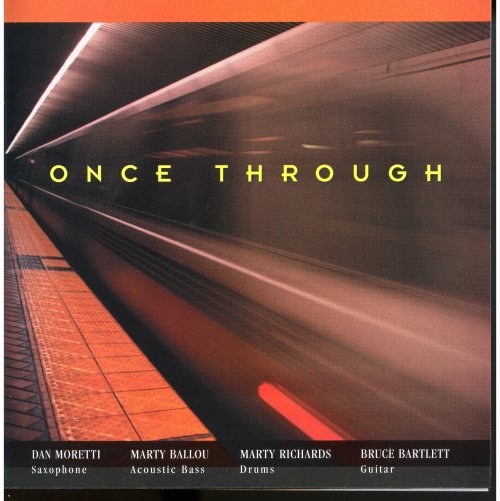
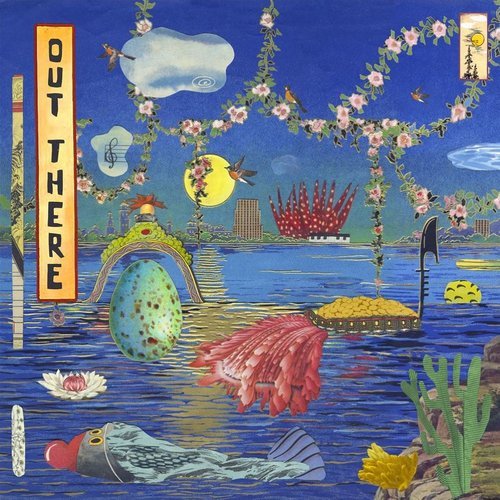
![Marlon Duncan & Bobby Gertund - First Morning Light (2026) [Hi-Res] Marlon Duncan & Bobby Gertund - First Morning Light (2026) [Hi-Res]](https://www.dibpic.com/uploads/posts/2026-01/1767778015_cover.jpg)
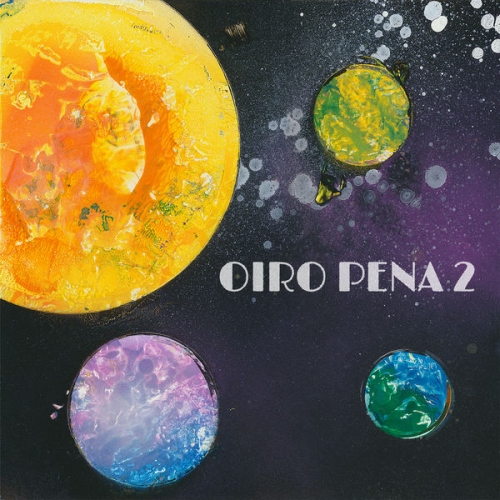


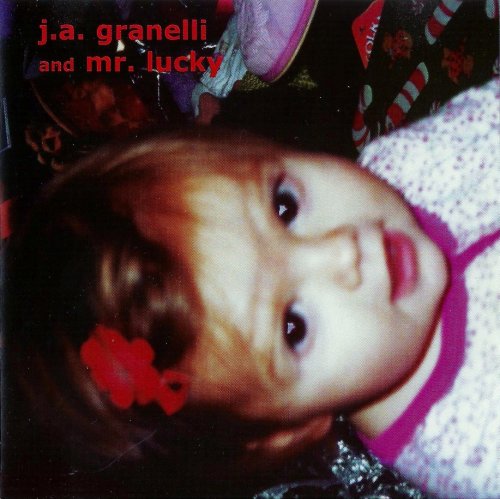
![Pymlico - Core (2025) [Hi-Res] Pymlico - Core (2025) [Hi-Res]](https://img.israbox.com/img/2026-01/03/l6kyknum5dngl5wzvdg0owfy4.jpg)
![Erika Dohi - Myth of Tomorrow (2025) [Hi-Res] Erika Dohi - Myth of Tomorrow (2025) [Hi-Res]](https://img.israbox.com/img/2026-01/03/2w8wezeg5u9w6h7u5ihkozt5b.jpg)